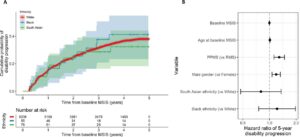
COVID spike protein seeds amyloid-β fibrils
Larsson and colleagues report that amyloidogenic fragments of the SARS-CoV-2 (COVID) spike protein can serve as seeds for amyloid-β 1-42 (Aβ42) fibril formation.
FOS reports synchronized neuronal input, not neuronal firing
This study found that FOS is not simply a reporter of neuronal firing, as has it has been considered for decades, but more accurately reflects periods of synchronized excitatory input.
Xylazine activates opioid receptors, responds to naloxone
In this study, Bedard and colleagues found that xylazine activates kappa opioid receptors (KORs) and, in female mice, is responsive to naloxone.
ATLAS: a monosynaptic, non-toxic anterograde tracer
In this study, the Arnold Lab reports the generation of ATLAS, a monosynaptic anterograde tracer without the toxicity or directional specificity issues of previous anterograde tracers.
Gut bacteria “wandering” into the brain?
In this study, induction of gut permeability in mice led to the presence of commensal gut bacteria in the brain.
Rapid, lasting tagging of active neurons
Zhang and colleagues report the generation of Ca2+-activated Split-TurboID (CaST), a new tool for marking neurons active during a specific time period in freely-behaving animals.
Other Notable Preprints:
“A unified open-source platform for multimodal neural recording and perturbation during naturalistic behavior.” Jonathan P. Newman, et al. – MIT.
“Human HYPOMAP: A comprehensive spatio-cellular map of the human hypothalamus.” John A. Tadross, et al. – University of Cambridge.
“Massively parallel in vivo Perturb-seq reveals cell type-specific transcriptional networks in cortical development.” Xinhe Zheng, et al. – Scripps Research Institute.
“Millimeter-sized battery-free epidural cortical stimulators.” Joshua E. Woods, et al. – Rice University.
“One-shot entorhinal maps enable flexible navigation in novel environments.” John H. Wen, et al. – Stanford University.
“Synaptic and peptidergic connectomes of the Drosophila circadian clock.” Nils Reinhard, et al. – Julius-Maximilians-University of Würzburg.
For a Zotero library with all of these preprints, click here.




